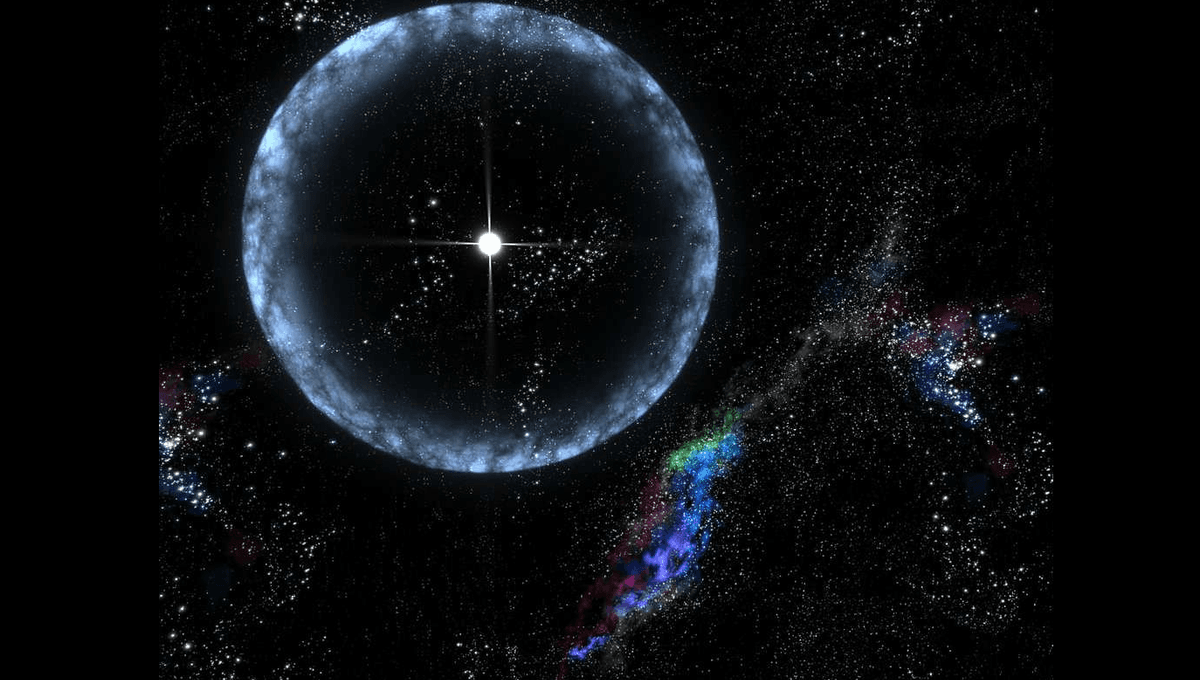
Particles of dark matter could interact with the neutrons in the core of neutron stars. If so, this should heat the stars, and new calculations suggest this might happen quickly enough that we could detect it, although the authors of the idea acknowledge it won’t be easy.
The universe is thought to contain almost six times as much dark matter as the ordinary, baryonic matter we can see. That makes our failure to detect dark matter (other than through its gravitational effects), let alone understand its nature, one of the biggest problems in physics. Claims that dark matter doesn’t exist, and its apparent effects can be explained in other ways, get lots of publicity, but have not convinced many physicists.
Instead, efforts have turned to more and more powerful instruments being built on Earth, but Professor Nicole Bell of the University of Melbourne has an idea for detectors vastly more powerful still, if a lot more remote.
Bell is first author of a new study proposing that if dark matter does interact with baryonic matter in ways other than through gravity, heat should be released when it occurs. On Earth, let alone in interstellar space, this would happen so rarely as to be exceptionally hard to detect.
“While dark matter is the dominant type of matter in the Universe, it is very hard to detect because its interactions with ordinary matter are very weak. So weak, in fact, that dark matter can pass straight through the Earth, or even through the Sun,” Bell said in a statement. “But neutron stars are different – they are so dense that dark matter particles are much more likely to interact with the star. If dark matter particles do collide with neutrons in the star, they will lose energy and become trapped. Over time, this would lead to an accumulation of dark matter in the star.”
Although we don’t know the form of these interactions, the authors expect they would involve the release of energy, which would ultimately become heat.
Co-author PhD student Michael Virgato added, “If the energy transfer happens quickly enough, the neutron star would be heated up. For this to happen, the dark matter must undergo many collisions in the star, transferring more and more of the dark matter’s energy until, eventually, all the energy has been deposited in the star.”
Previous estimates had suggested heat would be released so slowly it would not be detectable, but Bell, Virgato, and co-authors think this may not be the case. Bell told IFLScience that while we don’t know how often these interactions would occur: “If the experiments on Earth [looking for dark matter interactions’ are within shooting distance [of finding something] then an effect should be observable on neutron stars.”
Neutron stars are immensely hot when they form and cool slowly. If interactions are taking place the cooling should be even slower, and the stars should never get really cold, particularly in places where dark matter is concentrated.
Bell told IFLScience the theory could be tested by looking for neutron stars in places where dark matter is thought to be concentrated. “If we find a really cold neutron star in a dark matter-rich environment that tells us something,” she said. If we find a neutron star in such circumstances that is quite hot, there could be multiple explanations, with dark matter interactions only being one of them.
The search for dark matter is one of the greatest detective stories in science.
Professor Nicole Bell
Consequently, detecting cold neutron stars would initially tell us more. “Null results move things closer,” Bell noted, adding that this is the case for a lot of other efforts at dark matter detection. However, if alternative explanations could be ruled out for a hot detection we might really be getting somewhere.
Bell added that she is not an experimentalist, and hopes someone else will take the idea of studying neutron star temperatures and run with it. She acknowledges finding the right place to look could pose a further problem. “Our galactic center is rich in dark matter, but it’s messy,” she told IFLScience, increasing the range of possible explanations for anything we can find. Consequently, the best place to look might be relatively close to home, searching for aged neutron stars that glow in the infrared, or don’t.
They probably won’t be easy to find, but as Bell noted, “The search for dark matter is one of the greatest detective stories in science.”
The study is published open access in the Journal of Cosmology and Astroparticle Physics.
Source Link: Neutron Stars Could Be The Best Dark Matter Detectors Available